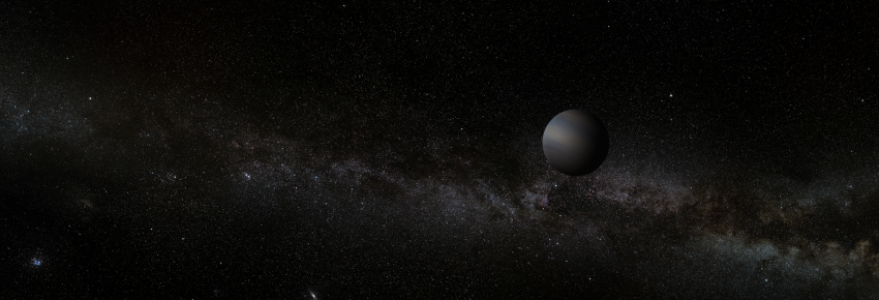A free-floating planet is an object gravitationally unbound to any star. An international team of astronomers announced the discovery of four new free-floating planets. Its research was published by “Monthly Notices of the Royal Astronomical Society”.
The newly discovered free-floating planets are consistent with planets of similar masses to Earth. They may perhaps have originally formed around a host star before being ejected by the gravitational tug of other, heavier planets in the system.
The astronomers used data obtained in 2016 during the K2 mission phase of NASA’s Kepler Space Telescope. The Kepler Mission is designed to survey our region of the Milky Way galaxy to discover hundreds of Earth-size and smaller planets in or near the habitable zone and determine the fraction of the hundreds of billions of stars in our Galaxy that might have such planets.
Rare gravitational microlensing events
During the two-month campaign, Kepler monitored a crowded field of millions of stars near the centre of our Galaxy every 30 minutes to find rare gravitational microlensing events. Astronomers found 27 short-duration candidate microlensing signals that varied over timescales of between an hour and ten days. Many of these had been previously seen in data obtained simultaneously from the ground. However, the four shortest events are new discoveries.
These new events do not show an accompanying longer signal that might be expected from a host star, suggesting that these new events may be free-floating planets.
Predicted by Albert Einstein 85 years ago as a consequence of his General Theory of Relativity, microlensing describes how the light from a background star can be temporarily magnified by the presence of other stars in the foreground. It produces a short burst in brightness that can last from hours to a few days (It refers to free floating planets. When it comes to stars, brightness lasts from several up to a hundred days). Roughly one out of every million stars in our Galaxy is visibly affected by microlensing at any given time, but only a few per cent of these are expected to be caused by planets.
The single blink of a firefly in the middle of a motorway
Kepler was not designed to find planets using microlensing, nor to study the extremely dense star fields of the inner Galaxy. This meant that new data reduction techniques had to be developed to search for signals within the Kepler dataset.
“These signals are extremely difficult to find. Our observations pointed an elderly, ailing telescope with blurred vision at one of the most densely crowded parts of the sky, where there are already thousands of bright stars that vary in brightness, and thousands of asteroids that skim across our field,” stressed Dr. Iain McDonald of the Open University (UK), who led the study.
“From that cacophony, we try to extract tiny, characteristic brightenings caused by planets, and we only have one chance to see a signal before it’s gone. It’s about as easy as looking for the single blink of a firefly in the middle of a motorway, using only a handheld phone,” added Dr. Iain McDonald.
Collaboration with NASA
Dr. Radosław Poleski from the UW Astronomical Observatory is currently participating in the planning of microlensed observations that will be carried out by the Nancy Grace Roman Space Telescope, built by the National Aeronautics and Space Administration (NASA).
“This telescope will be a breakthrough in the study of free planets as it will allow us to detect objects with much smaller masses than is possible now,” said Dr. Radosław Poleski.
He adds: “I hope that besides the Roman Telescope, the observations will be carried out by the ESA Euclid satellite. Join observation capabilities of these two telescopes would allow us to measure the masses of many free-floating planets. It would lead to a better understanding of the properties of these unusual objects,” explains Dr. Poleski.
Details of the publication:
“Kepler K2 Campaign 9: I. Candidate short-duration events from the first space-based survey for planetary microlensing”, “Monthly Notices of the Royal Astronomical Society” (2021), https://doi.org/10.1093/mnras/stab1377



